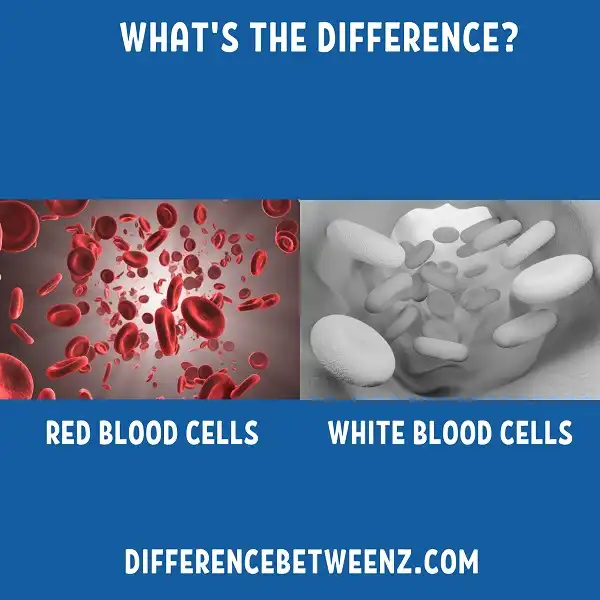Red blood Cells vs White blood Cells
Difference between red blood cells and white blood cells: – Blood is essential for humans. It represents almost 8% of body weight. It consists of plasma and different types of cells, but two of the most important types of blood cells are red blood cells and white blood cells.
Difference between red blood cells and white blood cells
If you are wondering and want to know what is the Difference between red blood cells and white blood cells, then keep reading the article.
Red blood cells
Red blood cells, also called erythrocytes, are the most abundant cells in our blood. The shape of red blood cells is small and biconcave. They have this structure due to the lack of nucleus and other organelles, but that is in the case of mammals; since those of the other vertebrates like the fish, reptiles and birds; they do contain inactive nuclei filled with hemoglobin (pigment that carries oxygen).
Erythrocytes have the ability to pass through small capillaries. They carry oxygen to the tissues in exchange for their carbon dioxide. The red blood cells are released from the bone marrow (from which they originate) and are kept in circulation with a useful life of approximately 120 days.
White blood cells
On the other hand, leukocytes or white blood cells are larger than erythrocytes. Unlike red blood cells, they are nucleated cells. White blood cells are responsible for carrying out the body’s immune functions (these are our defenses against disease). They are composed of granulocytes, lymphocytes and monocytes.
Compared with red blood cells, leukocytes are much smaller in number, but when fighting infections; the body tends to increase the number of them. Granulocytes and lymphocytes struggle n against the bacteria and viruses. The white blood cells are also responsible for producing antibodies to fight against any foreign element. Like Erythrocytes, they also occur in the bone marrow. However, they can occur in the spleen, thymus and lymph nodes.
In conclusion, the white blood cells and the red blood cells are very different from each other. They differ in structure, composition and functions. The red blood cells do not contain any nucleus, contrary to leukocytes. Red blood cells carry hemoglobin and release oxygen into tissues. On the other hand, the white blood cells perform tasks related to immunity. Erythrocytes are red because of the presence of hemoglobin, while leukocytes are colorless.
Key Differences between Red Blood Cells and White Blood Cells
- The physical structure of red blood cells (Erythrocytes) is that of biconcave and coreless disks in mammals, whereas white blood cells (leukocytes) have irregular shape, nucleus and outer layer in mammals.
- The life span of the red blood cells is usually 120 days; while that of leococitos can go from 4 to 30 days, depending on the body.
- Low red blood cell count is synonymous with anemia (the body’s ability to transport oxygen to tissues is reduced), while low white blood cells (leucopenia) can compromise immune function.
- The main function of red blood cells is to transport oxygen, while that of white blood cells is to provide protection against foreign matter and organisms.
- There is only one type of red blood cells, while there are several types of white blood cells: granulocytes, monocytes and lymphocytes.
- Red blood cells account for 40-45% of the blood volume, while white blood cells make up about 1% of the volume of blood.
- Red blood cells usually move in the cardiovascular system, while white blood cells move in the lymphatic system. Some in the lymph nodes escape from blood vessels and travel to places where there are infections or wounds.


